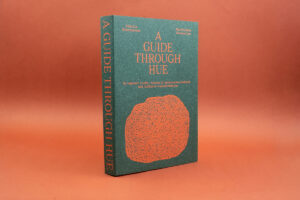YOUR CART
- No products in the cart.
Subtotal:
€ 0

SOLD OUT
Concept and photography:
Sibylle Eimermacher
Essays:
Sybrandt van Keulen
Harry Huisman
Translation and text edit:
Jenny Wilson
Design and lithography:
Rob van Hoesel
Production:
Jos Morree (Fine Books)
Print:
Wilco Art Books (NL)
Binding:
Benelux Boekbinders (NL)
Supported by:
Mondriaan Fonds
Jaap Harten Fonds
Tijl Fonds
Stroomversneller Arnhem
Stichting Ben Remkes Cultuurfonds
Stichting Gerbrandy Cultuurfonds
Born and raised in Germany, Sibylle Eimermacher (DE) has now lived in the Netherlands for over twenty years. Ever since childhood, she has been drawn to the rocky landscapes of Scandinavia. A few years ago, her eyes fell upon the reds, browns and purples of granite and porphyry found on sandy Dutch terrains. Researching the geological backgrounds of these glacial erratics, she was struck by two names pointing to the regions these stones originate from: the province of Dalarna in central Sweden and the Åland archipelago in Finland. Her urge to travel up north was reawakened. These stones on Dutch soil speak of the migratory routes that they followed during the glaciations. They are witnesses of faraway places, of those rocky Scandinavian landscapes.
A Guide Through Hue leads the viewer to where the rocks are laid bare, to the open veins that pigment the landscape and guide the eye from the moment it is attuned to the hue. Reddish, pale pink, purple and brownish granite and porphyry, often bleached in various gradations through weathering; here and there accompanied by greyish and pale-coloured metamorphic rock interlaced with ornamental strands.
Leaving behind their native Scandinavian bedrock, their presence gradually spreads, scatters and finally fades into the Dutch flatlands; ignoring national borders as well as the boundaries of nature and culture, as bits and pieces are picked up, isolated, integrated, and utilised in human civilization. What can be seen on the one hand as representatives of a migratory, homeless state of being – going along with feelings of longing and not-belonging – can be experienced on the other as interconnectedness, an undeniable presence and surrender to the universal condition of constant change.
This book is an invitation to travel with the mind. It is a record of Eimermacher’s observations, an attempt to communicate what is perceived and to materialise the fleetingness of perception on paper.
Including essays by Sybrandt van Keulen and Harry Huisman.
Sibylle Eimermacher was born 1979 in Münster, Germany. She lives and works in Arnhem. From 2000 to 2004 she studied at the AKI Mixed Media in Enschede, in 2006 she obtained a Master of Fine Art at the Frank Mohr Institute in Groningen. Since then she has worked as a visual artist in the disciplines of photography, video, artist’s books, sculpture and performance, and has exhibited her work at home and abroad. Her work has been exhibited at, among others, Museum Arnhem, Johan Deumens Galerie in Amsterdam, Galerie Block C in Groningen, Kunstverein Kleef, Babel in Trondheim and GroundWork Gallery in King’s Lynn.
“What Eimermacher and Gignoux's books seem to share, is the question of our ability to perceive and judge things beyond our very immediate temporal and geographic circumstances. We are a short-termist species, living brief and remote lives, and we often struggle to see beyond the horizons of our vantage point on the world. Perhaps if we were able to return to more of a pre-modern perspective, and once again see animals, plants and even inert rocks as things pulsating with life and movement, our readiness to destroy them in the pursuit of very fleeting advantage might not be so great. This ability to show us something beyond our horizons, and in doing so reimagine something we believe we understand, is perhaps one of the things that photographic works like these two books can do best.” (Lewis Bush (C4 Journal))
Rocks Remember: Mountain Tops to Moonscapes x A Guide Through Hue